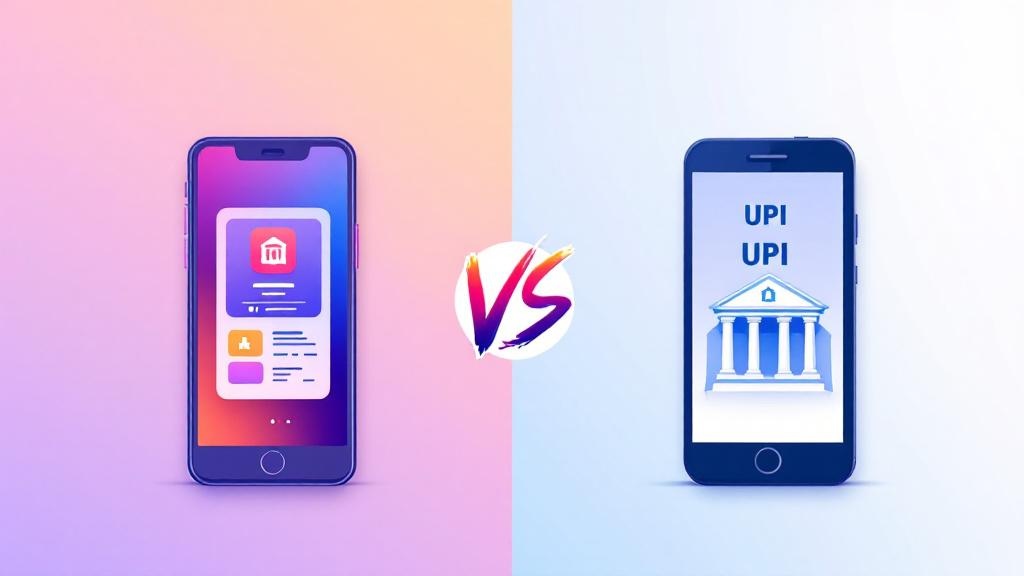Introduction
The digital payment landscape in India has witnessed remarkable growth over the last decade, with the rise of UPI (Unified Payments Interface) and digital wallets driving much of this transformation. However, as UPI continues to dominate the market, digital wallets are having to adapt quickly to maintain their relevance. This article explores the evolving competition between digital wallets and UPI, focusing on how digital wallet companies are innovating to stay competitive and meet changing user needs.
The Dominance of UPI in India
UPI has been a game-changer for India’s payment systems. With over 4.6 billion transactions in March 2023 alone, UPI’s growth has surpassed that of other digital payment solutions, including wallets. The convenience, real-time transactions, and minimal fees have made it a favorite for both consumers and businesses.
But how is this impacting digital wallets? How are companies like Paytm, PhonePe, and Google Pay adjusting their strategies in response to UPI’s rising dominance? Let’s take a closer look.
The Rise of Digital Wallets
Before we dive into how digital wallets are adapting to UPI, it’s important to understand their journey. These mobile payment apps started by offering a secure way to store money digitally and make easy payments. Paytm, PhonePe, and Google Pay were some of the pioneering apps that helped millions transition from cash to cashless transactions.
Over time, digital wallets expanded their offerings. Besides storing funds, they began offering services like bill payments, mobile recharges, peer-to-peer transfers, and even investment products. However, UPI has brought a shift in the payments ecosystem, largely due to its simplicity and cost-effectiveness.
UPI vs Digital Wallets: A Comparison
1. Transaction Speed & Cost
The biggest draw of UPI is its instantaneous nature. Transactions are processed in real-time, and users don’t need to worry about fees—which often burden wallet transactions. On the other hand, digital wallet payments may include transaction charges, making UPI the more attractive option for cost-conscious consumers.
2. Interoperability and Reach
UPI, by design, allows interoperability, meaning it can be used across various banks and payment platforms. In contrast, digital wallets are mostly platform-specific (i.e., Paytm wallet works best within the Paytm ecosystem). UPI’s open architecture has made it the default choice for many users and merchants in India.
3. Security & Fraud Prevention
Security is a top concern for any payment system. UPI has a built-in two-factor authentication (2FA) system, making it highly secure for users. Digital wallets, however, also employ encryption and multi-layer security measures but still need to deal with fraud concerns more frequently.
How Digital Wallets Are Adapting to UPI Dominance
As UPI continues to gain market share, digital wallets are embracing several strategies to maintain their foothold in the competitive digital payment apps market. Here’s how:
1. Offering UPI Integration within Wallet Apps
Many leading digital wallet platforms, like Paytm and PhonePe, have integrated UPI payment platforms within their apps. This allows users to perform UPI transactions, such as bank-to-bank transfers, without leaving the wallet app. By integrating UPI, wallets are creating an omni-channel experience, allowing users to benefit from both wallet-based payments and UPI-based transactions in one place.
2. Focusing on User Experience and Ease of Use
Wallet apps have always focused on simplicity, ensuring a smooth experience for users. To maintain this edge, wallet companies are streamlining their UPI processes, making it as easy as possible for users to send or receive payments. Through QR code transactions and contactless payments, digital wallets are enhancing user convenience, helping them compete with UPI’s ease of use.
3. Introducing Innovative Financial Services
To stand out, wallets are now offering additional services like loans, insurance, and even investments. Fintech startups in India are also capitalizing on the growing interest in financial inclusion, integrating wallet apps with banking apps in India and offering unique real-time payment systems. These innovations help differentiate wallets from UPI, offering users more than just basic payments.
4. Merchant Payment Apps & POS Solutions
Another area where digital wallets are evolving is merchant payments. By providing merchant payment apps, wallets are building out solutions to allow small and medium-sized businesses to accept payments seamlessly. UPI’s growth statistics show a significant uptake among merchants, but wallets are offering specialized services such as POS terminals and integrated solutions for businesses looking for more personalized services.
5. Boosting Loyalty Programs and Rewards
Wallets are also innovating by adding features like loyalty programs and rewards, which incentivize users to keep using their platforms over UPI. These perks often come in the form of cashbacks, discounts, or even exclusive deals, making digital wallets more attractive to regular users.
Key Statistics: UPI’s Growth and Market Share
To understand the extent of UPI’s dominance and why digital wallets are feeling the heat, consider these statistics:
UPI processed 4.6 billion transactions in March 2023.
The UPI market share now accounts for over 60% of the total digital payments volume in India.
In comparison, digital wallet usage in India continues to grow but has plateaued slightly in the face of UPI’s dominance.
While UPI continues to see phenomenal growth, digital wallets still hold a significant portion of the market, especially in areas like mobile wallet market share and contactless payments.
Frequently Asked Questions (FAQs)
1. What is the main difference between UPI and digital wallets?
UPI allows instant bank-to-bank transfers and is interoperable across various platforms, while digital wallets store money and facilitate payments within their specific ecosystem.
2. Are digital wallets safe for online transactions?
Yes, most digital wallets use two-factor authentication (2FA) and encryption to ensure the security of online transactions.
3. Which is better for small businesses: UPI or digital wallets?
Both UPI and digital wallets are useful, but for small businesses, wallet-based payments offer more flexibility with merchant apps and loyalty programs, which can increase customer retention.
4. What are UPI transaction limits?
Currently, the UPI transaction limits for a single transaction are set at ₹1 lakh, but users can transact lower amounts depending on the bank’s policies.
5. How do digital wallets support contactless payments?
Many digital wallets offer contactless payments through QR code transactions, where users can make payments by scanning a code rather than using physical cards.
6. Can I use a digital wallet with UPI?
Yes, most digital wallets in India now support UPI integration, allowing users to perform UPI transactions directly within the wallet app.
7. Will UPI eventually replace digital wallets?
While UPI’s growth is significant, digital wallets still offer additional services like loans, insurance, and rewards, which UPI currently does not provide. As a result, both systems are likely to coexist and cater to different user needs.
Conclusion
As UPI continues to dominate the digital payment landscape in India, digital wallets are evolving and finding new ways to stay relevant. From integrating UPI payment platforms within their apps to offering unique financial services, wallets are focusing on user convenience, innovation, and security to maintain their position in the market. With their loyalty programs, merchant payment apps, and additional features, digital wallets are ensuring they remain a vital part of India’s growing digital economy.
In the end, the future of digital payments in India will likely be shaped by collaboration rather than competition. Whether it’s through UPI or digital wallets, India’s real-time payment systems are evolving rapidly, and consumers stand to benefit from this dynamic growth.








Comments (0)